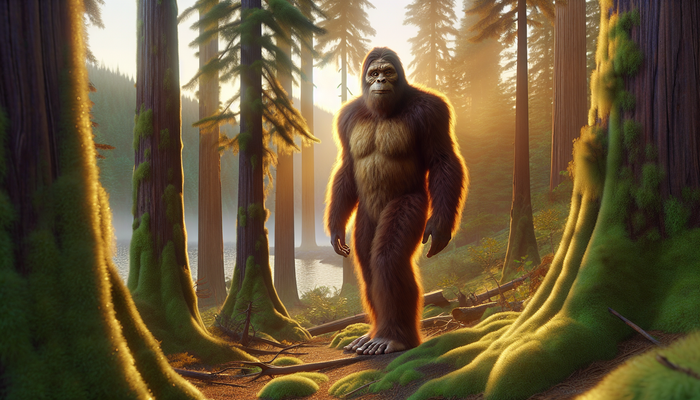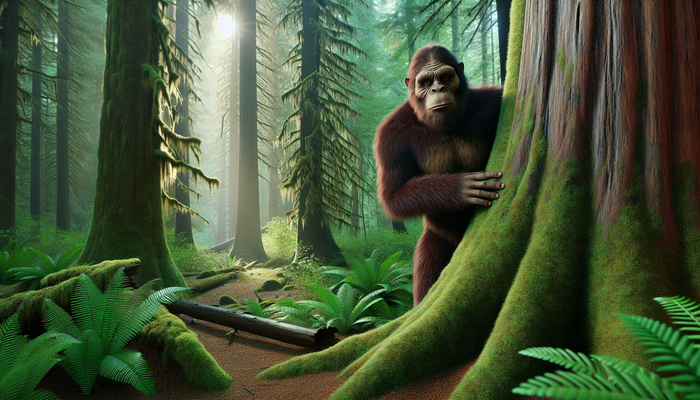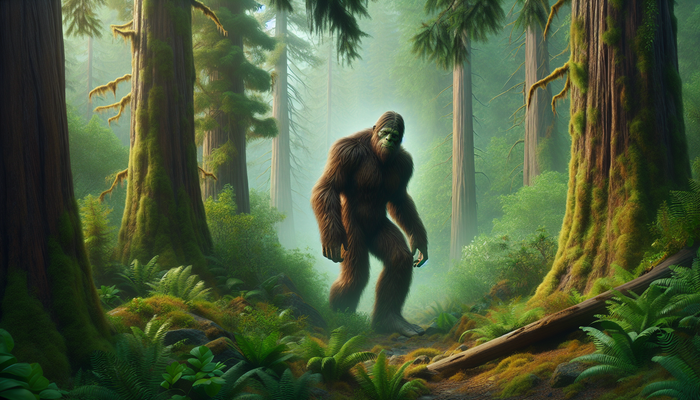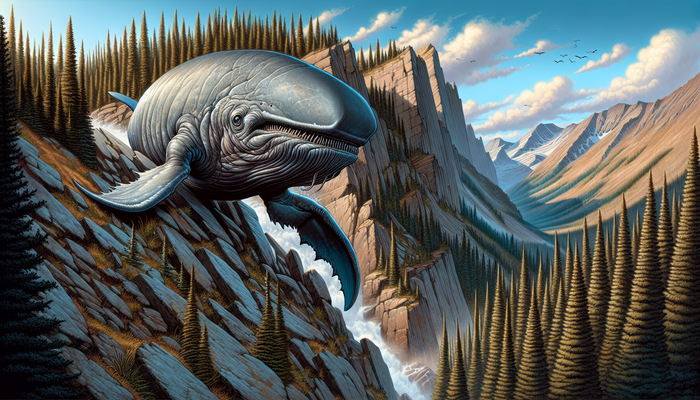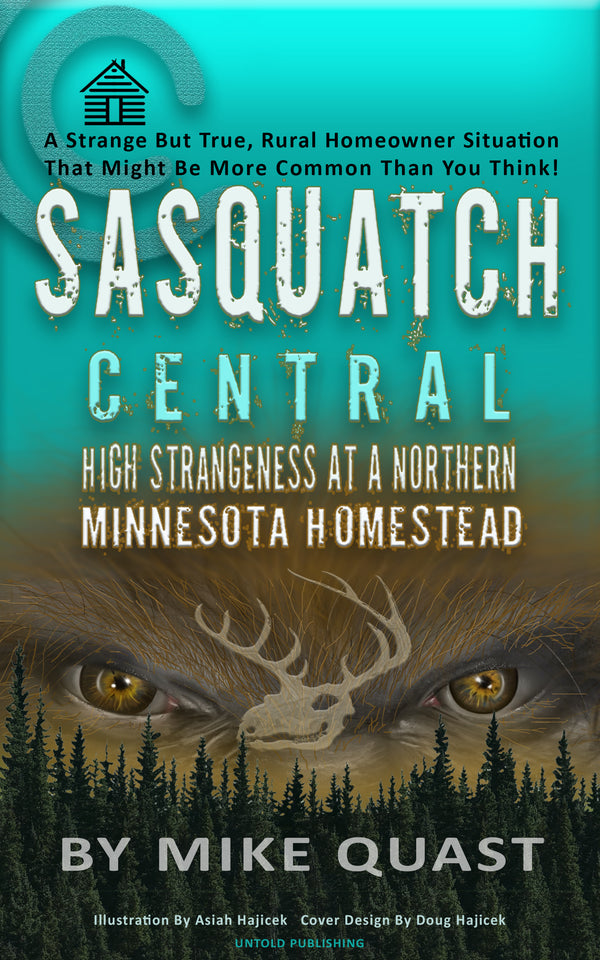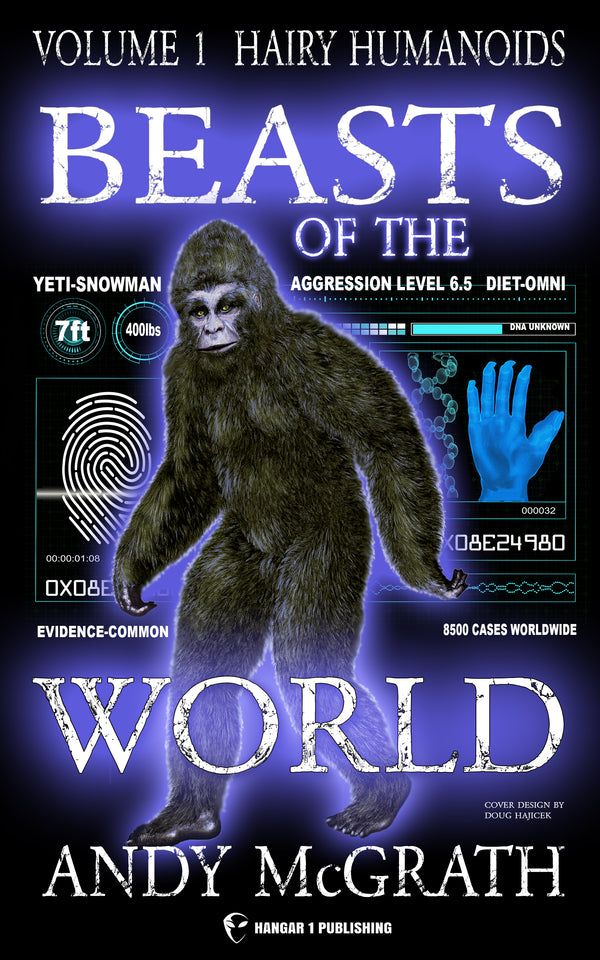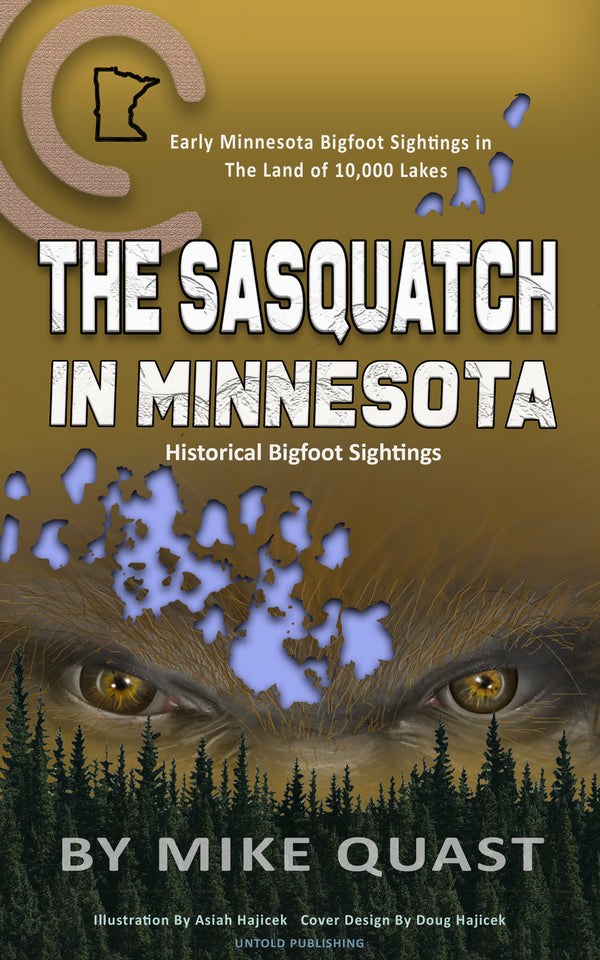The Stonish Giant: From Iroquois Legends to Modern Bigfoot
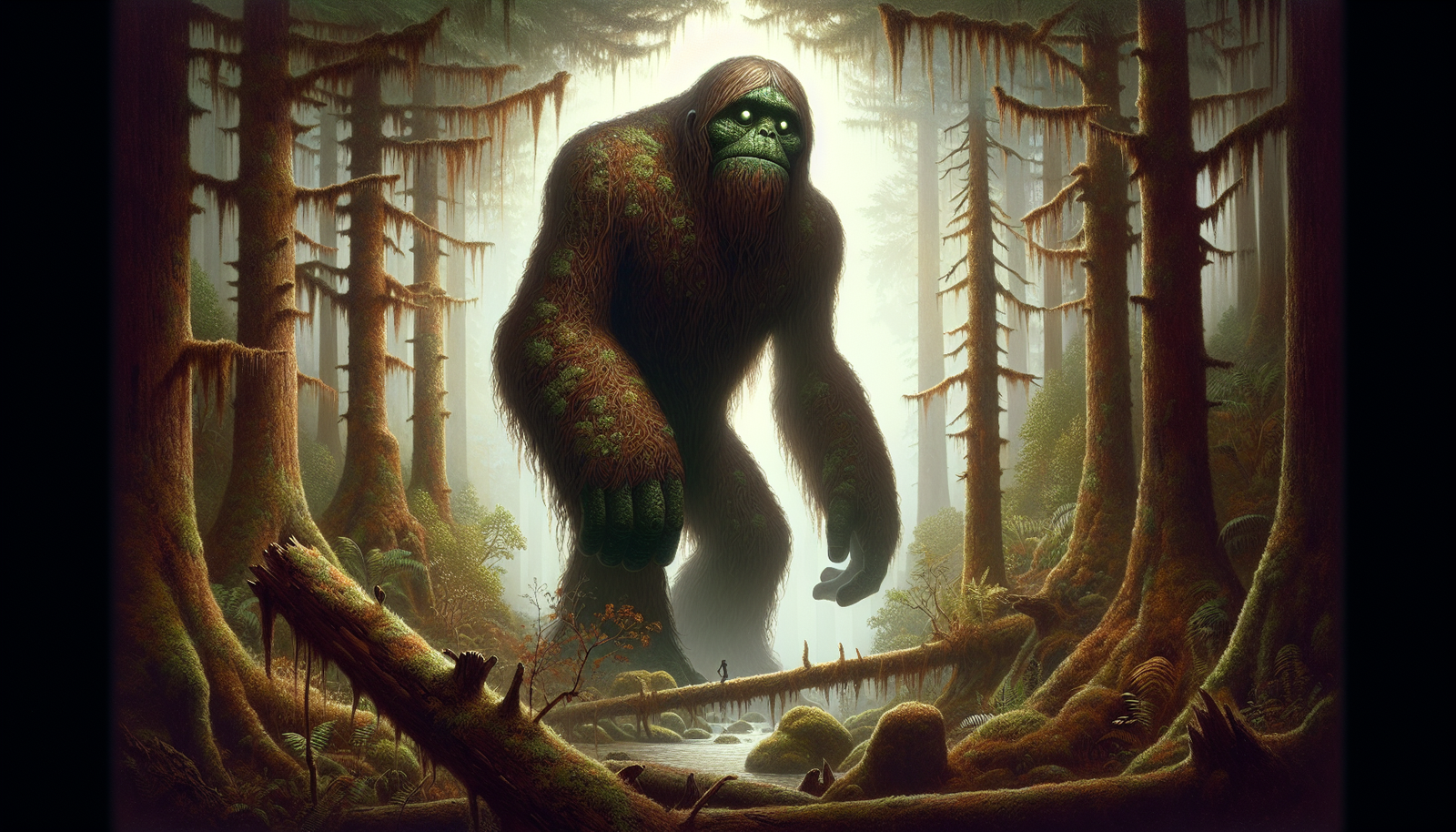
By Wade Beaumont, Cryptozoologist and Park Ranger
Ever since I was knee-high to a grasshopper, I've been captivated by the mysteries of this world, especially those critters that slip past the boundaries of known science. And one of the slipperiest is the Stonish Giant. Now, that might not be a familiar name to even the most seasoned 'squatch hunters out there. But it's a creature straight out of Native American legends, with roots reaching back centuries before folks started swapping Bigfoot sightings around the campfire.
The Legend of the Stonish Giant
To understand the Stonish Giant, we first have to look at the people who gave birth to its legend—the Iroquois Confederacy. This historic union of tribes once stretched across the Northeast woodlands, bound together by a shared heritage passed down through generations. That heritage was preserved in intricate oral traditions full of cautionary tales, epic struggles and supernatural beings.
Among those beings were the "Ot ne yar heh," or Stone Giants, documented for the first time in the 19th century by a Tuscarora historian named David Cusick. In his writings, Cusick described the Stonish Giants as formidable creatures whose bodies were covered in fur so thick that arrows couldn't pierce it. To early Native Americans, these giants were the stuff of nightmares—cannibals of towering height and prodigious strength who raided settlements and devoured villagers.
According to Cusick's accounts, the Stonish Giants once terrorized the lands south of the Great Lakes, preying on tribes like the Huron and the Tuscarora. But the Iroquois Confederacy eventually drove these monsters back after a long and brutal war. As Cusick wrote, "The Stonish Giants were so ravenous that they devoured the people of almost every town in the country." Yet in the end, "the Stonish Giants left the country and seeks an asylum in the regions of the north."
Modern researchers speculate that stories like these might have described early encounters with Bigfoot-like creatures. And if that's the case, then the Stonish Giants weren't simply mythological figures—they were flesh-and-blood cryptids whose legends have echoed across centuries.
A Cryptic Connection?
When you compare accounts of the Stonish Giant to modern Bigfoot eyewitness reports, some striking similarities arise. The giants' massive frames, towering height, and thick impenetrable fur sound an awful lot like our favorite Sasquatch, don't they? Same goes for the raw power and speed these creatures reportedly possessed. By all accounts, the Stonish Giant wasn't some lumbering oaf—it was an apex predator of the forests.
Physical characteristics aside, the aggressive, territorial nature of the Stonish Giant also resembles commonly described Bigfoot behaviors. And isn't it fascinating that two creatures sharing so many attributes surfaced in the same North American regions centuries apart? Some researchers take this as evidence that a giant, bipedal hominid has endured in the wilds of this continent since ancient times. In that view, oral traditions like the Stonish Giant legends preserved ancestral memories of real creatures, passed down through generations and influencing modern Bigfoot lore.
The Stonish Giant in Popular Culture
Say what you will, but the entertainment industry has brought cryptozoology to the masses, even putting the Stonish Giant in the spotlight. The most prominent example is Destination America's "Mountain Monsters," which follows a band of backwoods hunters chasing monsters through the Appalachians. In one episode, the team heads to Ohio after locals spot a Bigfoot known as the Stonish Giant. They even interview a hunter who claims he shot the beast, citing the arrow-deflecting fur as proof it was no ordinary 'squatch!
Now, I'm the first to admit reality TV should be taken with a grain of salt. But you can't deny it's created renewed public interest in the Stonish Giant legend. And not just idle interest—the show's got folks fired up to actually go hunting for evidence themselves! Some see that as problematic, portraying serious cryptozoology as a gimmick. But I reckon any open-minded exploration that gets people engaged with nature is a good thing. Maybe reality shows blur science and spectacle, but they spark a sense of adventure in viewers, and sometimes that passion leads to real breakthroughs.
Between Mythology and Cryptozoology
When it comes to a figure like the Stonish Giant, the biggest challenge is separating folklore from fact. Without physical evidence, cryptozoologists have to balance healthy skepticism with open-mindedness. And when you deal in oral traditions and cultural legends, things get muddled pretty quickly.
On one hand, stories like the Stonish Giant could be pure mythology—an attempt to explain the unknown by ancient cultures. Some modern researchers write these legends off as fable, not fact. But others argue that dismissing such accounts outright risks losing valuable ethnographic insights. The truth often lies somewhere in the middle.
See, I don't believe any folklore is totally fabricated. These tales originate from real experiences that get embroidered over generations. But that core experience of a genuine encounter can still remain. So as a cryptozoologist, the trick is picking apart those threads of truth from the mythological trappings woven around them. Not an easy task, but the Stonish Giant is too tantalizing to ignore for either academics or amateur investigators like myself. We just have to chase this mystery the right way—with an open mind but critical eye.
The Cultural Heritage of the Stonish Giant
As a proud Texan, I know how important legends are to a people's cultural heritage. They connect us to the past and shape our identities. So while the Stonish Giant may not be a proven flesh-and-blood reality yet, one thing's for sure—it's a pivotal figure in Iroquois folklore that deserves to be preserved.
See, these oral traditions represent the accumulated wisdom and experiences of ancestors passed down through generations. The Stonish Giant endures because it holds meaning for tribes like the Iroquois, embodying the mysteries and dangers of the old wilderness. To dismiss such legends as idle fantasy risks losing a vital thread of cultural heritage.
Now, that doesn't mean the Stonish Giant should just remain a static myth. I believe these stories should inspire continued study of the environments and creatures that shaped them. Tales of giant woodland monsters likely arose from early human encounters with real animals like bears, shaped over time into legendary beings. Seeking those kernels of truth is worthwhile, and deepens our understanding of both human culture and natural wonders.
The Modern Quest for the Stonish Giant
The Stonish Giant's legacy continues today as intrepid investigators scour North America for evidence that ancient legends are more than myth. Guys like me pick up the trail wherever we can, interviewing eyewitnesses, examining footprints, and setting up trail cams in remote wilderness. We're using 21st century tools to unravel a centuries-old mystery.
Some of the most exciting expeditions have been organized by cryptozoology groups like the North American Wood Ape Conservancy. They've collected numerous reports of a large bipedal creature in the Northeast matching descriptions of the Stonish Giant. And back in 2010, the group Cryptid Hunters actually launched an extensive field study focused on uncovering the Stonish Giant itself around New York's Adirondack region.
Now, none of these efforts have yet to provide conclusive proof. But as a fellow cryptid hunter, I admire the passion and dedication driving these quests. And I think all this field work and eyewitness testimony helps legitimize the Stonish Giant as something worth pursuing, not just dismissing as folklore. We may not have a type specimen in hand yet, but the search continues, and each new piece of evidence brings us one step closer to a definitive breakthrough.
Conclusion
As I sit here writing this, gazing out my window at the Texas wilderness that raised me, I can't help but feel we're on the cusp of unveiling some thrilling secrets. Call me an eternal optimist, but I believe legendary figures like the Stonish Giant endure across centuries because they represent something real we've yet to fully discover.
These creatures reflect our own tenuous relationship with the natural world—a world that still holds mysteries science has not fully explored. The Stonish Giant and its cryptid kin beckon us to stay curious, keep searching for answers and remain open to possibilities beyond the horizon of our current knowledge.
So I implore you, fellow adventurers—get out into those dark forests and remote wildernesses. Listen to local lore, learn from the cultures tied to the land, and chase every tantalizing clue. Maybe you'll be the one to finally bring the Stonish Giant out of Native legends and into zoological reality. Just remember—the truth is out there for those with the drive and imagination to find it. Happy hunting!
FAQs
What evidence is there for the existence of the Stonish Giant?
There's no definitive physical evidence yet, but numerous eyewitness accounts in Native traditions and modern times suggest a giant bipedal creature that fits the description. Some researchers also point to the many cultural legends as cumulative evidence that something real inspired those stories.
If the Stonish Giant is real, what species could it be?
Theories range from an undiscovered hominid like Bigfoot to an unusually large bear. But no scientific consensus exists, so cryptozoologists continue investigating to hopefully uncover more biological clues and get a better sense of what these creatures may be.
How big is the Stonish Giant supposed to be?
Accounts vary, but most describe the creature as 8 to 10 feet tall and weighing over 1,000 pounds. Some legends speak of giants up to 15 feet tall, but the more common estimates suggest a creature substantially larger than any known wildlife but shy of fantastical proportions.
Does the Stonish Giant still exist today?
There are certainly many modern sightings of large, bipedal, hair-covered creatures that fit the Stonish Giant description. But without definitive evidence, their existence can't be confirmed. The quest continues to prove whether these longstanding legends reflect a real animal or are purely mythical.
If Stonish Giants were real, why have we never found remains?
Wilderness areas are vast with many secluded places a reclusive creature could hide. Combined with low population densities, that makes finding remains unlikely. But some point to controversial discoveries of anomalously large skeletons as potential Stonish Giant candidates.


